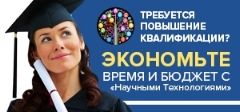| |
The results of the agricultural crop agrocenoses entomocomplexes analysis within the northern forest-steppe of the South of Western Siberia for 2019-2021 are presented in the article. The taxonomic composition and dynamic density of ground-soil invertebrate communities were studied in agrocenoses of spring wheat and corn at different levels of agrotechnological intensification. The representatives of terrestrial fauna caught in all plots belonged to classes: Insects (Insecta), Spiders (Arachnida), Millipedes (Myriapoda), Lipopods (Chilopoda), Diplopods (Diplopoda). Insects were represented by 5 groups: Coleoptera, Heteroptera, Hymenoptera, Lepidoptera, Orthoptera. The most numerous group was the Coleoptera, which comprised 12 families: Beetles (Carabidae), Deadheads (Silphidae), Staphylinae (Staphylinidae), Weevils (Curculionidae), Blackflies (Tenebrionidae), Plateworms (Scarabaeidae), (Elateridae), Coccinellidae, Chrysomelidae, Cantharidae, Dermestidae, Histeridae. According to preliminary data, the species richness of terrestrial invertebrates in the studied area is about 140 species. The proportion of the participation of Coleoptera varied in different years in the range 72-91%. The total average seasonal dynamic density of trapped invertebrates was higher in spring wheat agrocenoses in all years of the study regardless of the intensification level. The findings concluded that there was no significant effect of the agro-technological intensification level on the species composition and dynamic density of terrestrial invertebrate communities.
Keywords:entomocomplexes, agrocenosis, species diversity, terrestrial invertebrates, herpetobionts, dynamic density, intensification of agriculture, forest-steppe.
|






